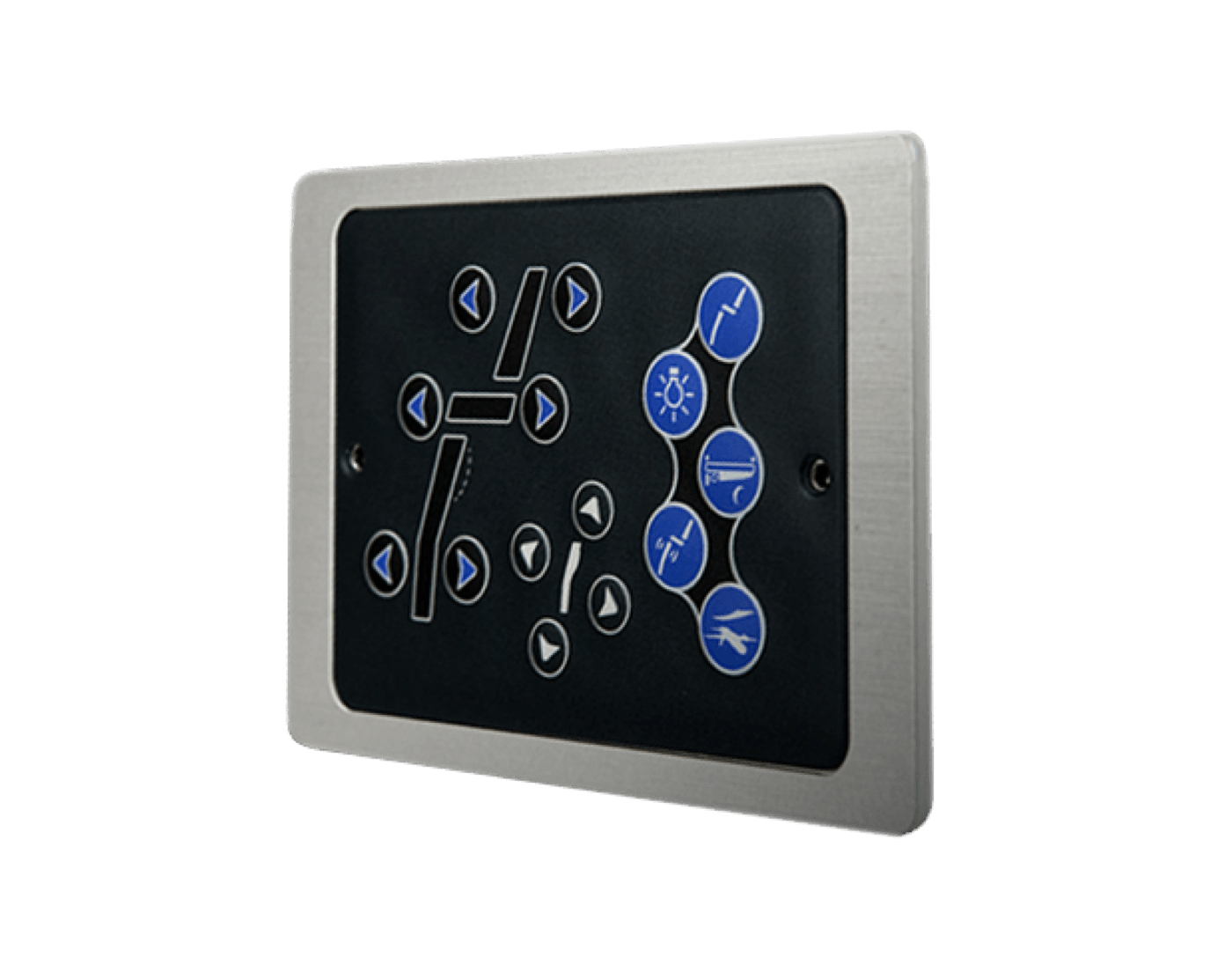Membrane Switch Modern Technology: The Secret to Reputable and Cost-Effective User Interfaces
Membrane layer button modern technology has actually arised as an essential part in the style of individual interfaces, supplying both dependability and cost-effectiveness across a diverse variety of applications. As we discover the complex benefits of membrane switches, their possibility for innovation raises inquiries about future applications and developing trends.
Recognizing Membrane Switch Over Technology
Membrane switch technology is an extensively made use of user interface option in numerous electronic devices, offering a seamless blend of performance and design. This technology integrates numerous layers of products, normally being composed of a visuals overlay, spacer layer, and a circuit layer. The graphic overlay presents the user interface aspects, while the spacer layer separates the circuit layer from the overlay till a customer triggers a switch.
When stress is put on the overlay, the circuit layer completes the electric circuit, sending out a signal to the device. This device enables different configurations, consisting of tactile responses and backlighting choices, enhancing customer interaction. Membrane layer switches are usually manufactured using sturdy products such as polyester or polycarbonate, ensuring long life and resistance to environmental variables like wetness and dust.
The adaptability of membrane layer changes enables their application in diverse sectors, including clinical gadgets, consumer electronics, and commercial controls. Their compact style allows for combination right into space-constrained atmospheres, offering an efficient customer interface without endangering visual allure. Understanding the intricacies of membrane layer button innovation is essential for producers and developers seeking to produce dependable and efficient human-machine interfaces.
Key Advantages of Membrane Layer Buttons
While various interface services exist, membrane switches over offer distinctive benefits that make them a favored selection in numerous applications. Among the primary advantages is their sturdiness; membrane layer buttons are designed to endure extreme ecological problems, consisting of moisture, dirt, and temperature variations, making certain lasting performance. This strength considerably decreases the need for regular substitutes, thereby reducing general upkeep costs.

Additionally, membrane switches are light-weight and portable, making them ideal for applications where room is restricted. Their low-profile layout adds to a streamlined look without jeopardizing capability.
Cost-effectiveness is likewise a significant advantage, as the production process for membrane switches often tends to be less costly contrasted to typical mechanical buttons. This affordability, combined with their integrity and simplicity of installment, settings membrane switches as a functional option for a large range of sectors looking for effective and efficient individual interfaces.
Applications Across Various Industries
Just how do membrane layer switches adjust to the diverse needs of different industries? Membrane layer button innovation is progressively identified for its flexibility, making it ideal for a vast range of applications throughout several markets.
In check out this site customer electronics, membrane layer switches supply a small remedy for remote controls and home devices, boosting individual experience with instinctive design. Furthermore, the commercial market leverages membrane layer buttons for machinery control panels, gaining from their resistance to extreme atmospheres, such as wetness and dirt.
Army and aerospace applications also use membrane layer switches for their dependability and ability to endure severe problems, making certain operational effectiveness in important scenarios. Additionally, the food and drink sector adopts these switches for automated systems, where cleanliness and simplicity of procedure are vital. Inevitably, membrane layer switches are tailored to meet the unique demands of each sector, proving their important role in modern technology interfaces
Design and Customization Choices

In the world of membrane button technology, layout and modification choices play an essential role in enhancing performance and user interaction. These switches can be customized to fulfill details functional requirements and aesthetic choices, making them versatile components in different applications.
One of the main customization alternatives is the design of the button itself, which can be created to accommodate one-of-a-kind interface and ergonomic considerations. By readjusting the shape, dimension, and arrangement of switches, manufacturers can develop intuitive styles that facilitate convenience of use. Additionally, the unification of different colors and graphic overlays enables for branding and boosted exposure, making certain that individuals can quickly recognize features.
Moreover, membrane layer switches can be engineered with different responsive responses mechanisms, such as raised buttons or distinct clicks, to improve the customer experience. Different products can additionally be picked for toughness and environmental resistance, attending to variables such as dampness, temperature changes, and chemical direct exposure.
Eventually, the extensive style and modification options offered in membrane switch you can try these out modern technology equip organizations to create tailored remedies that not just meet functional demands but likewise line up with their branding and functional demands.

Future Fads in Membrane Buttons
As membrane button technology proceeds to evolve, future trends are progressively concentrated on boosting user experience and integrating innovative functionalities. One significant fad is the assimilation of touch-sensitive and capacitive modern technologies right into traditional membrane buttons. This advancement permits more instinctive customer interfaces, giving responsive responses while keeping a streamlined layout.
An additional arising fad is making use of ecologically pleasant products, driven by the growing demand for sustainable production techniques. Suppliers are looking for to reduce their carbon impact by using recyclable substrates and low-impact inks, aligning with international sustainability goals.
Furthermore, the rise of the Internet of Things (IoT) is motivating the incorporation of clever attributes right into membrane switches. Enhanced connectivity options will certainly allow gadgets to interact with each other, allowing for smooth assimilation right into wider systems.
Furthermore, improvements in printing technologies, such as digital printing, are permitting better style flexibility and customization. This enables manufacturers to generate detailed layouts and dynamic colors cost-effectively.

Verdict
In final thought, membrane button innovation stands for an important technology in individual interface layout, providing significant advantages in durability, modification, and cost-effectiveness. As developments continue to arise, specifically in touch-sensitive user interfaces and view it sustainable products, the potential for membrane switches over to boost customer experience and functionality remains appealing.